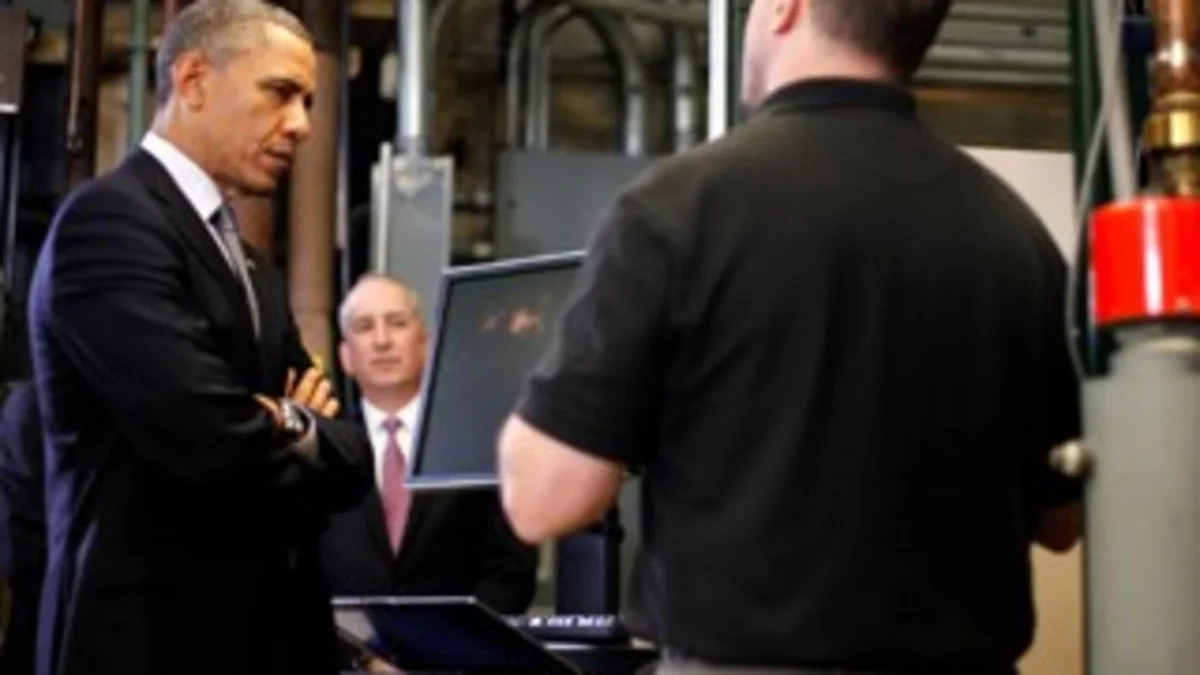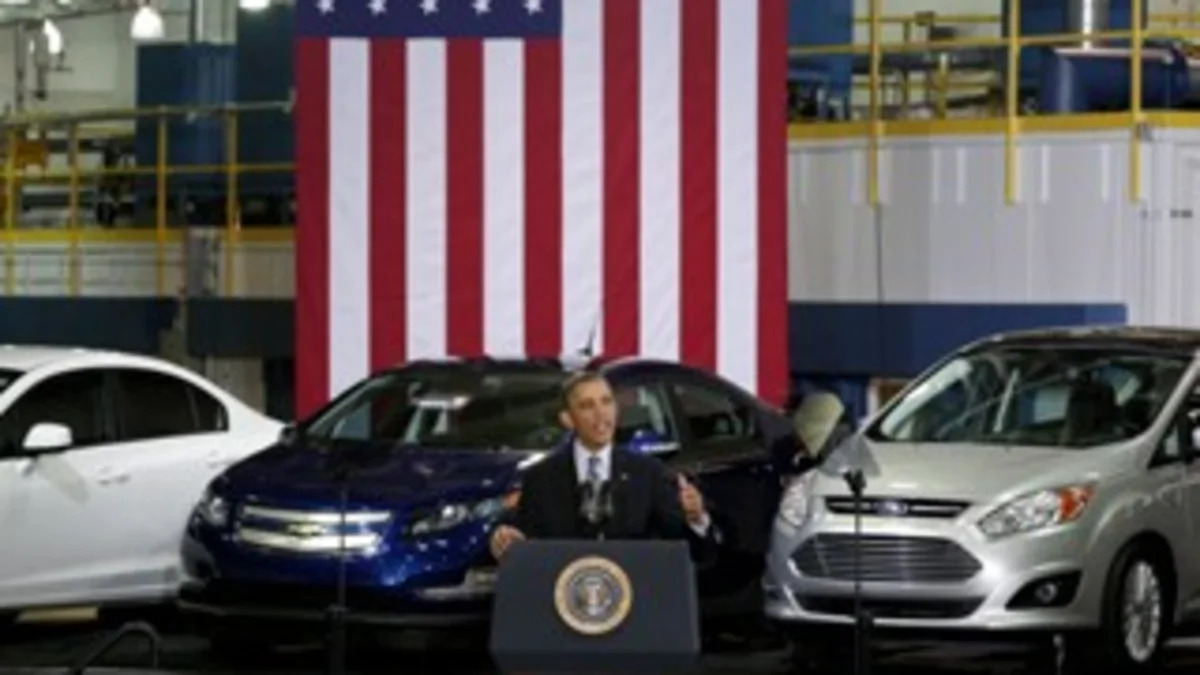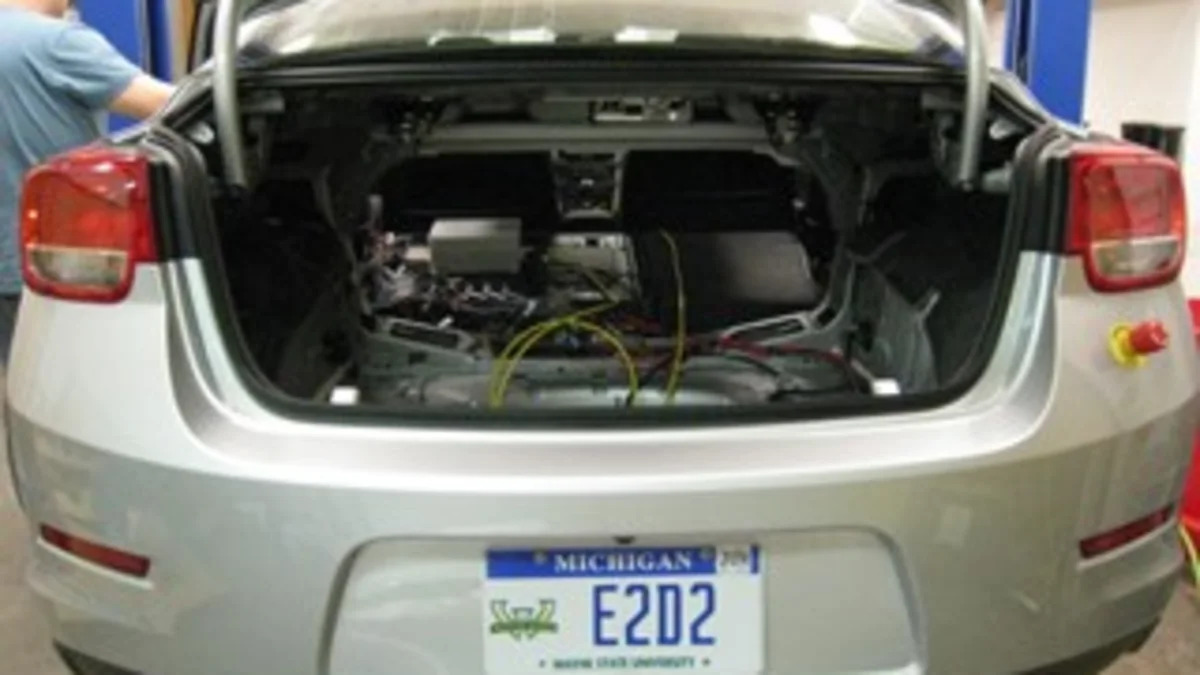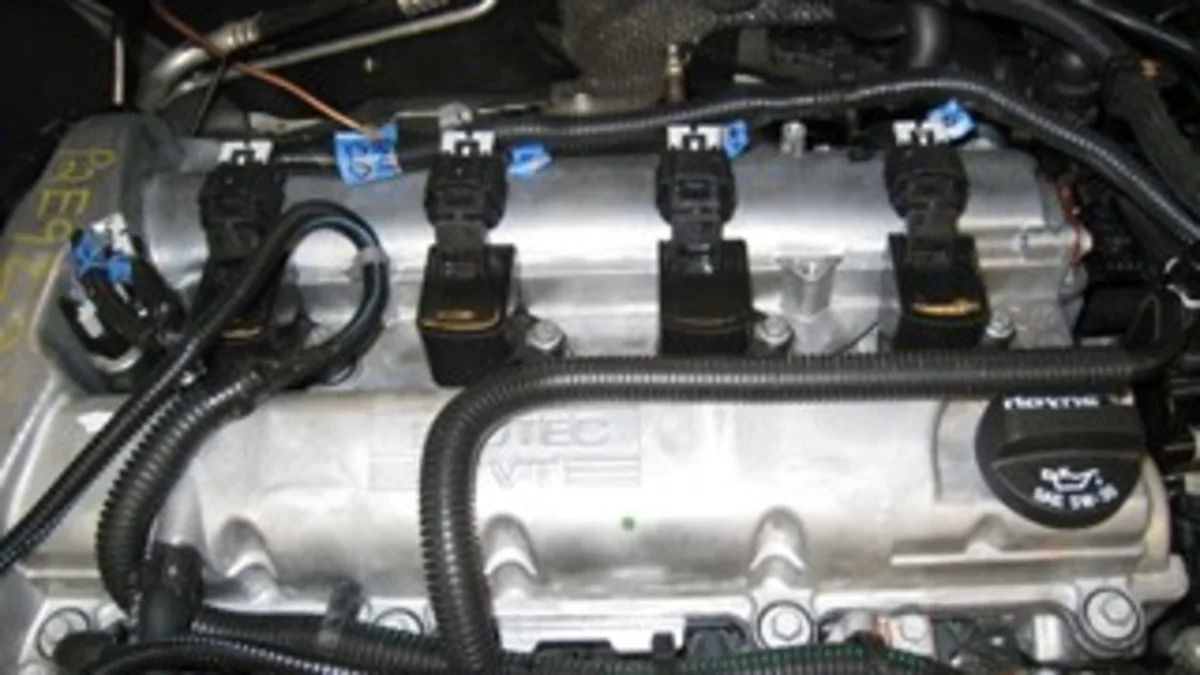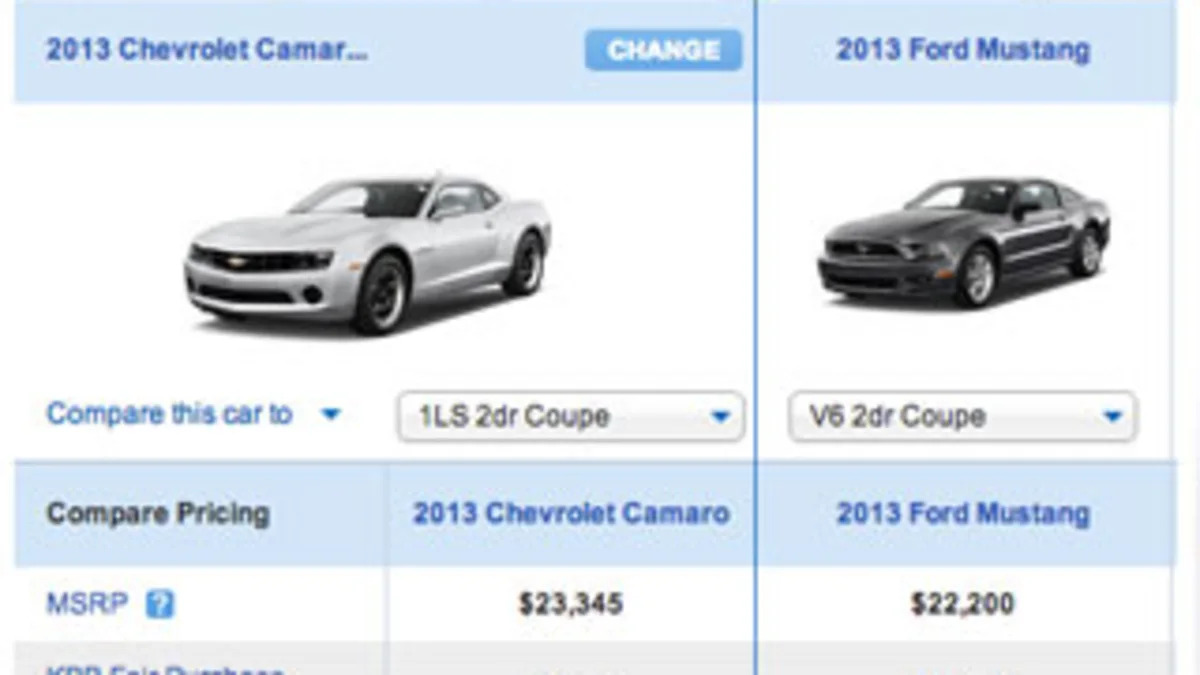How A Group Of College Students Are Responding To President Obama's Energy Challenge
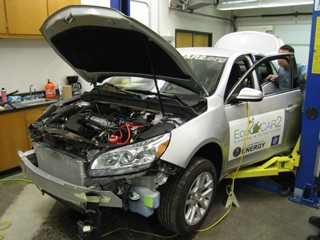
-

- Image Credit: Pete Bigelow
Removed from a car parked nearby, a state-of-the-art engine sits unused next to a desk in a dusty corner of a classroom.
Students at Wayne State University in Detroit have installed an older engine model, and are tinkering with it to make it more fuel efficient. Their challenge: Reinvent the guts of an ordinary car, the 2013 Chevy Malibu, and transform it into a poster child for green driving.
Wayne State is one of 15 universities across the country participating in the Department of Energy’s EcoCar2 competition to see which school can build a car that reduces fuel consumption, greenhouse gas emissions and tailpipe emissions.
Car-building competitions often favor exotic vehicles: Students design stealth-shaped vehicles and solar-paneled cars that are futuristic, yet unrealistic.
In the EcoCar2 challenge, students must use cars that are ready-made for today’s roads. And they must build a car that regular, Walmart-loving mainstream Americans might actually want to buy.
How it fits with President Obama's energy goals: -
- Image Credit: AP photo
EcoCar2 embodies Obama's energy goals
President Obama visited Argonne National Laboratory outside Chicago recently to announce his latest efforts at curbing the country’s reliance on traditional gasoline. There, he proposed a $2 billion energy trust fund to pay for research into alternatives.
"The only way to really break this cycle of spiking gas prices, the only way to break that cycle for good, is to shift our cars entirely – our cars and trucks – off oil," he said.
Argonne was perhaps an ideal location for such an announcement. Among its many forays into advanced vehicle technologies, the lab also runs the EcoCar2 program in conjunction with the DOE.
When Argonne first started running similar competitions a quarter-century ago, they favored biofuels and other technologies that weren’t being used in production vehicles.
Over the years, some of that technology has been added to production vehicles. But Argonne's competitions have more recently moved toward being more relevant to today's auto industry. Argonne wants evolutionary changes, not necessarily revolutionary ones.
"The result is you are seeing teams using off-the-shelf parts in new-and-unique ways," said Kristen De La Rosa, EcoCar2’s director. "Things that don’t normally go together are being used to build custom control systems." -
- Image Credit: AP photo
Big milestone awaits students in Yuma
From start to finish, it takes three years for EcoCar2 teams to devise a plan and then turn it into a tangible result. The schools are roughly two-thirds of the way finished.
Most teams will finish installing engines and components in their cars in April in anticipation of a test that marks the end of the second year. In May, they'll bring their car to GM's Proving Grounds in Yuma, Ariz., where they'll undergo tests and evaluations.
Between now and then, the Wayne State team needs to install its battery, build the rear-wheel drive system, and add an electric motor, radiator, pumps and suspension. And then make sure it all works.
"We spent a lot of the first semester this year waiting on pieces," said Idan Regev, the project's chief engineer. "By the end of March, we'll get some numbers, and April is hopefully about driving and trying to fix stuff. At Yuma, we don't want anything to break down there." -
- Image Credit: Pete Bigelow
Expectation: Double the Malibu's fuel economy
Replace the engine.
That was the first decision Regev and his chief engineer, Kevin Snyder, reached when beginning EcoCar2 at Wayne State. The LUK engine, which was the engine the team removed from the car, may be more advanced than the one they replaced it with. But the LE9 engine they opted for gave them a flex-fuel option that would allow them to run the car on E85, a fuel blend made primarily of corn-based ethanol.
Although they sacrificed some fuel efficiency with the choice, using E85 still helped the team achieve their goal of lowering use of traditional gasoline by approximately 85 percent and decreasing tailpipe emissions – two of the benchmarks in the competition.
Alternatives included using an engine that could run B20 diesel fuel and a hydrogen fuel cell that converted chemical energy from fuel into electricity. Most of the other EcoCar2 schools made the same ethanol choice. Four are using B20 diesel and one, Regev and Snyder heard through the grapevine, is attempting to build its own fuel cell.
"That would have been exotic," Regev said, smiling.
Given the time constraints, ethanol made the most sense. Coupled with a hybrid system they'll soon install, the pair think they'll have the Malibu achieving 60 mpg by the time the competition ends next year.
The empty trunk space pictured to the left is where they're going to put the battery. It's lithium-ion hybrid from A123, and it weighs over 600 pounds. -
- Image Credit: Pete Bigelow
The next generation of automotive engineers
At first glance, they are perhaps unlikely candidates to become the face of the auto industry's next generation of alt-fuel engineers.
Regev, 33, is an Israeli citizen, who studied aerospace engineering there before following his wife to the Detroit area three-and-a-half years ago. Snyder, 37, spent his childhood abroad and attended the University of Tennessee. He's pursuing his master's degree in electric-drive vehicle engineering at Wayne State, one of a handful of universities that offer such a graduate degree.
As participants in EcoCar2, they’re undoubtedly the next generation.
General Motors and many of the program's other 30 or so sponsors are hiring EcoCar participants so quickly into their ranks, that many land jobs before finishing the competition. It's one of the reasons EcoCar2 mandates teams bring undergraduates to Yuma – to ensure smooth succession as students leave their schools.
"You've seen so much growth in the auto industry, and keeping pace with electrification is such a challenge," De La Rosa said. EcoCar2 students "have been through the fundamental learning process, and now they’re ready do to the next stop of ingenuity."
She said participants in EcoCar2 and similar Argonne programs can over the years have patented technologies at a higher rate than other engineers and that 75 percent of the students land jobs in the auto industry. Students at each university collectively put about 10,000 man hours into each vehicle.
"From the vision on a computer through the prototype phase, and seeing the end result run an emissions lap, there’s so much invested in seeing this come to life," she said. "We challenge them with the impossible, and when they do go through this, they become people who want to stay involved." -
Are you shopping for a new car this month? Check out our Car Compare tool!
It allows you to compare two to five cars to see how they compare on on price, features and performance.
